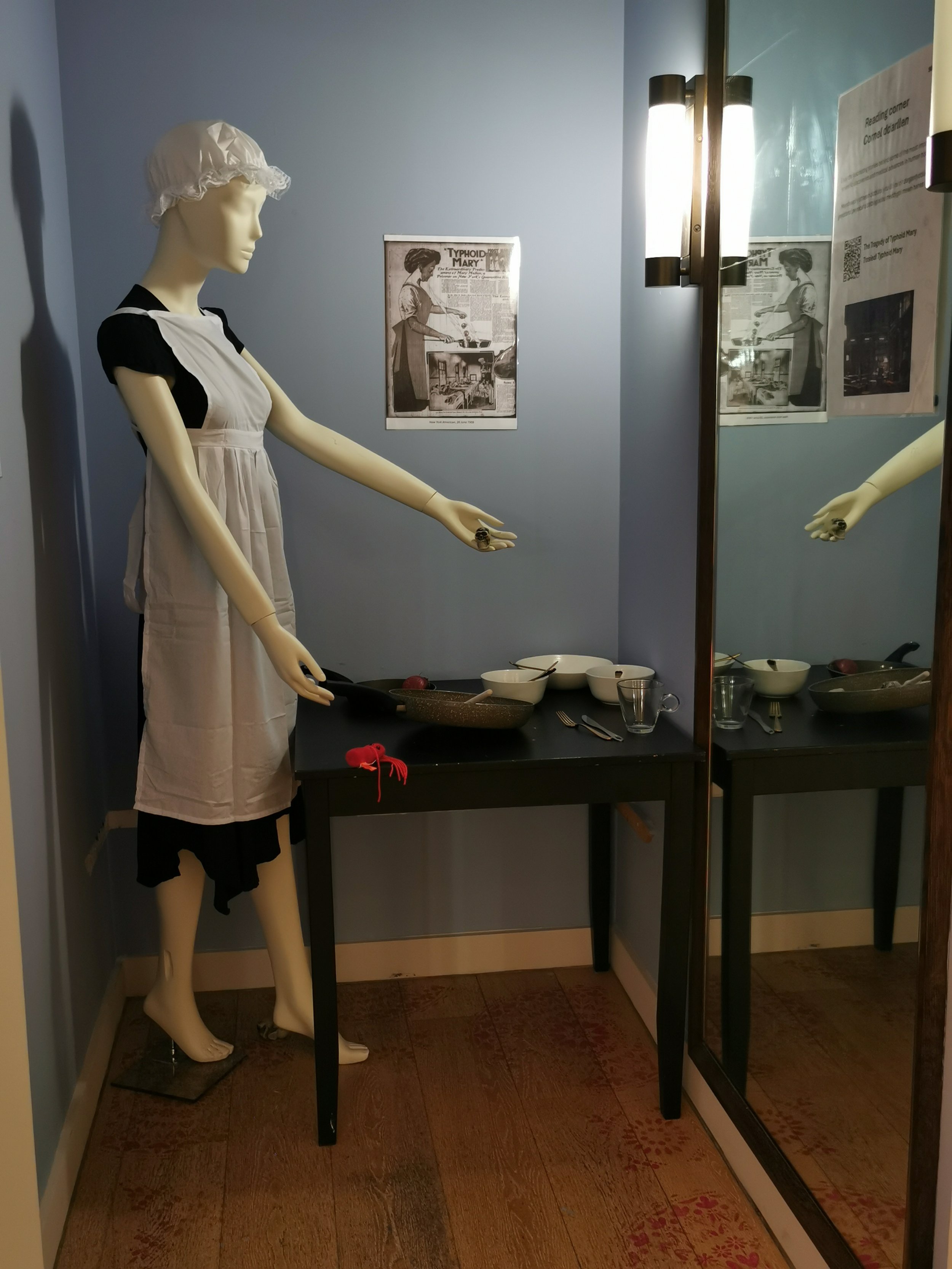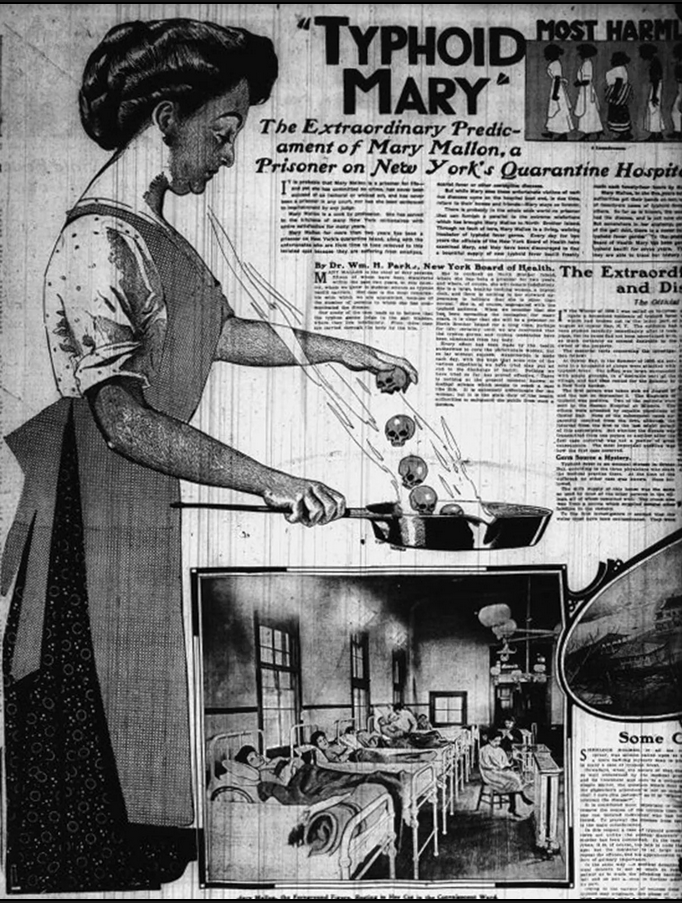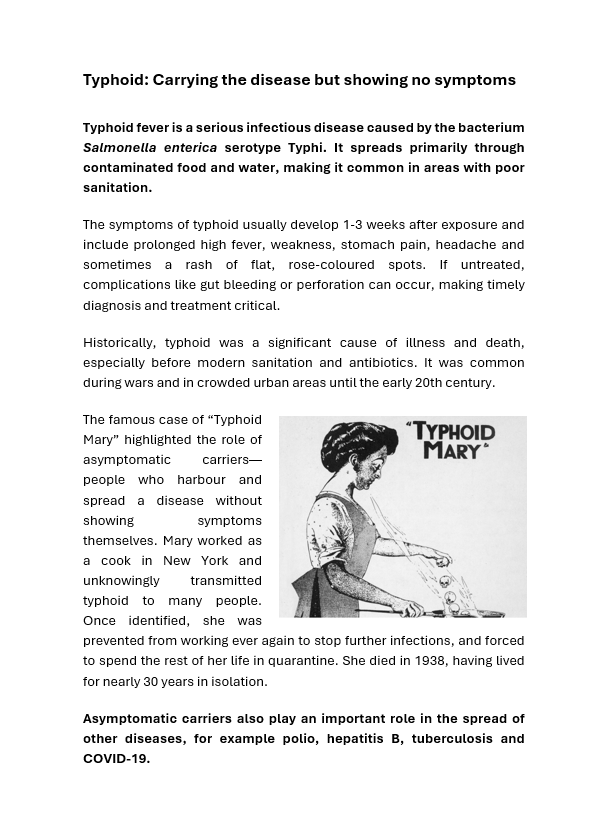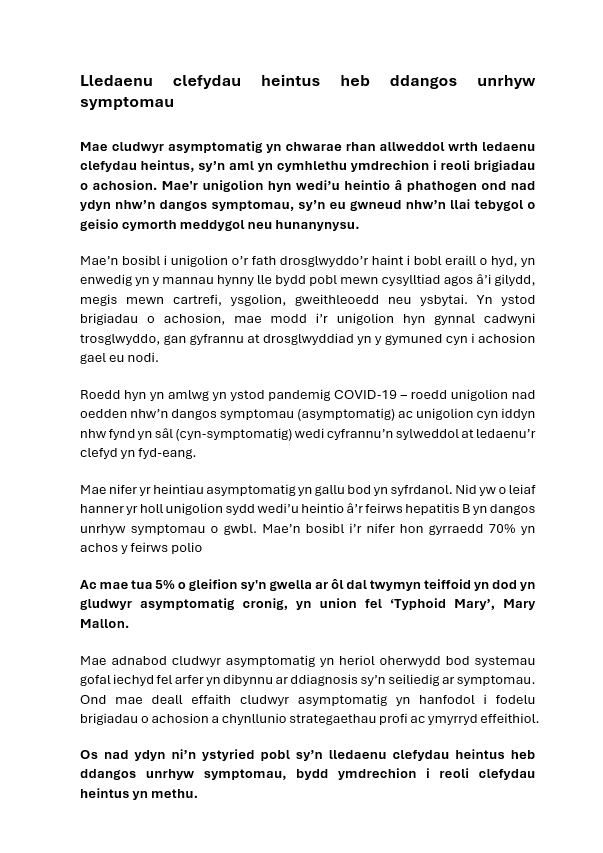
Horror Show – Typhoid
Carrying the disease but showing no symptoms
Typhoid fever is a serious infectious disease caused by the bacterium Salmonella enterica serotype Typhi. It spreads primarily through contaminated food and water, making it common in areas with poor sanitation.
The display featured a mannequin dressed up as Mary Mallon preparing miniskulls in a frying pan, thus recreating the infamous illustration in the 1909 New York American article about ‘Typhoid Mary’.
Posters provided information about the disease in general, and about the role of asymptomatic carriers not only with regard to typhoid but also other infectious diseases.
Materials to download, in English and Welsh:
➡️ Story Time: The Tragedy of Typhoid Mary
The symptoms of typhoid usually develop 1-3 weeks after exposure and include prolonged high fever, weakness, stomach pain, headache and sometimes a rash of flat, rose-coloured spots. If untreated, complications like gut bleeding or perforation can occur, making timely diagnosis and treatment critical.
Historically, typhoid was a significant cause of illness and death, especially before modern sanitation and antibiotics. It was common during wars and in crowded urban areas until the early 20th century.
The famous case of “Typhoid Mary” highlighted the role of asymptomatic carriers—people who harbour and spread a disease without showing symptoms themselves. Mary worked as a cook in New York and unknowingly transmitted typhoid to many people. Once identified, she was prevented from working ever again to stop further infections, and forced to spend the rest of her life in quarantine. She died in 1938, having lived for nearly 30 years in isolation.
Silent spreaders
Asymptomatic carriers also play an important role in the spread of other diseases, for example polio, hepatitis B, tuberculosis and COVID-19, often complicating efforts to contain outbreaks. These individuals are infected with a pathogen but do not show symptoms, making them less likely to seek medical attention or self-isolate.
Such individuals can still transmit the infection to others, especially in close-contact settings such as households, schools, workplaces or hospitals. During outbreaks, these silent spreaders can sustain chains of transmission, contributing to community transmission before cases are recognised.
This was evident during the COVID-19 pandemic, where individuals showing no symptoms (asymptomatic) and individuals before becoming ill (pre-symptomatic) contributed significantly to the global dissemination of the disease.
The proportion of asymptomatic infections can be staggering. At least half of all individuals infected with the hepatitis B virus appear to show no symptoms. For poliovirus infections, this number can reach 70%.
And around 5% of patients recovering from typhoid fever become asymptomatic chronic carriers of the disease – just like ‘Typhoid Mary’, Mary Mallon.
Identifying asymptomatic carriers is challenging due to the usual reliance of healthcare systems on symptom-based diagnosis. But understanding the impact of asymptomatic carriers is essential for modelling outbreaks and designing effective testing and intervention strategies.
Without accounting for silent spreaders, efforts to control infectious disease outbreaks may fall short.
➡️ Horror Show
Return to the Horror Show starting page
➡️ Pop-Up Shop 2025
Go to the main event page of our 2025 Pop-Up Shop





